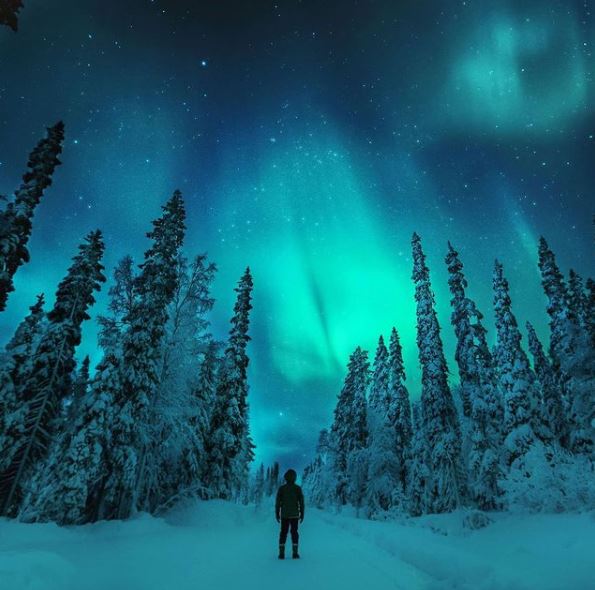Northern Lights
Northern Lights
Electrically charged particles from the sun collide with the Earth’s atmosphere, causing the formation of the Northern Lights, the most visible light in the night sky.

The light is seen from the magnetic poles of the northern and southern hemispheres and is known from north to south as aurora borealis or australi.
Join our Arctic Circle Expedition and (hopefully) see the lights!
The auroras tend to be more frequent and spectacular during the high sunspot activity, which occurs about every eleven years. The altitude of the display is between 1000 and 620 miles, most of which are between 80 and 120 km.

The auroras appear in a variety of colours, with pale green and pink being the most common, but also pale blue, red, orange, yellow, green and blue are common. The Northern Lights spectacle is particularly spectacular and widespread in the northern hemisphere in the summer months, especially in the case of high sunspot activity. In recent years, it has been highlighted in the news as one of the most spectacular auroras in the world.
The Northern Lights are actually the result of charged particles released into the atmosphere by the sun. The light appears as scattered clouds, curling curtains or radiant rays that illuminate the sky in an eerie glow. Colour variations occur when gas particles collide, and when sunspot activity is high, the light changes colour from green to blue. The lights are created when solar particles collide with gas in the Earth’s atmosphere, not through solar radiation. The rotation of the sun hurls free electrons and protons into its atmosphere, which escape through holes in the magnetic field and are hurled into our atmosphere. Earth’s magnetic fields are weak at the poles, and charge particles are largely deflected from them before they are blown to Earth by the solar wind. These particles therefore enter the Earth’s atmosphere and collide with the gas in front of it.

Scientists have found that the northern and southern auroras are mirrors in most cases – like images that occur simultaneously. Northern Lights are seen in a mirror image of phenomena occurring near the magnetic poles, while similar locations in the east have never experienced the mysterious lights.
The best place to look for the lights is in northern Scandinavia. Our Arctic Circle Expedition and 3-Countries Expedition are perfectly timed to experience the lights.
Participants on this adventure of a lifetime are in the most ideal location to view the lights as we are away from artificial light and very often under clear skies. Plus being above the Arctic Circle, the Northern Lights are visible 240 days a year.

Although the Northern Lights are present in Greenland all year round, they are only visible in the winter months. Most of Greenland is within the Arctic Circle, making it one of the best places to explore Greenland, no matter where you go. Off the coast, the remote archipelago of Spitsbergen offers a great opportunity to see the Northern Lights and a variety of other natural phenomena such as whales, seals, whales and whales. We plan on running experiences to Greenland in the not so distant future- watch this space!
The auroras of the south are visible all year round and are concentrated around the rings of Antarctica and the southern Indian Ocean. The northern hemisphere is also well-known for its aurora in the winter months. Areas that are not exposed to light pollution, such as the Arctic Circle, are some of the best places to see the lights.
Researchers have also found that auroras are cyclical, peaking about every 11 years, with the peak at the end of the summer months and the low point in the autumn and winter months.
The earliest known description of the Northern Lights appears to be an observation made by an official astronomer, King Nebuchadnezzar II, in the years 568 – 567 BC. Some people have claimed to hear sounds associated with the Northern Lights, but documenting the phenomenon has been difficult. In June 1896, the theory of electrons in sunspots that trigger aurora was proposed.




